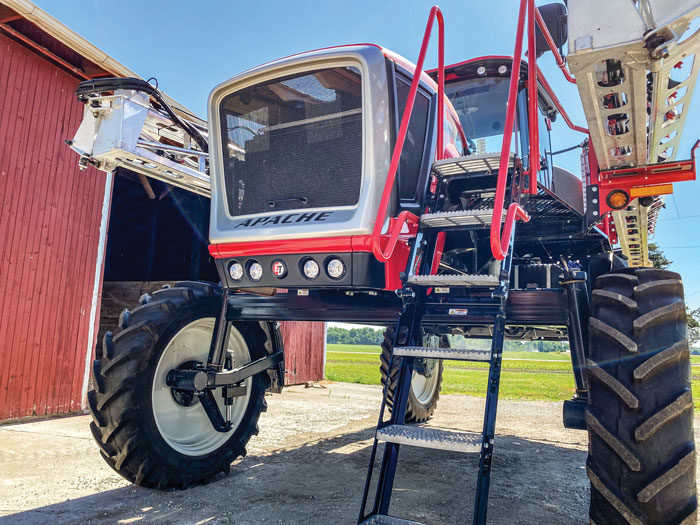No-Till Farmer
Get full access NOW to the most comprehensive, powerful and easy-to-use online resource for no-tillage practices. Just one good idea will pay for your subscription hundreds of times over.

CALIBRATION NATION. A sprayer can only be effective, efficient and safe if properly checked and calibrated well before it is taken to the field and periodically during the spraying season, according to Ohio State pesticide application expert Erdal Ozkan. Noah Newman/No-Till Farmer
A routine maintenance check-up on your sprayer will help ensure efficient and effective applications this spring.
First things first, make sure to wear personal protective equipment (PPE) like rubber gloves, safety goggles and long sleeves when working with pesticide application equipment, says Ryan Bergman, Iowa State University extension agricultural spray application equipment expert.
“Consult specific chemical labels for proper PPE,” he says. “It’s important to make sure your sprayer is mechanically sound. Consult your owner’s manual for checklists and specifications to evaluate during this process.”
Nozzle setup should be atop the checklist. Inspect your nozzles to see if they work well with the products you’re applying at the speeds and pressure you plan to operate, Bergman says.
“Some chemicals like dicamba and 2,4-D products have strict nozzle requirements, whereas other products like glyphosate allow more choices,” he says. “For example, there are only 4 types of TeeJet nozzles approved for use with Enlist Duo herbicide.”
When applying multiple products, Bergman recommends referring to the label with the strictest nozzle requirements to select your nozzle for that application.
“If you want to operate at a wide range of speeds and pressures during the season, you may want to evaluate the benefits of a PWM (pulse-width modulated) spray system to provide a broader range of nozzle flow rates while managing droplet size more consistently.”
Ohio State University pesticide application expert Erdal Ozkan lists the following factors to consider when selecting nozzles: